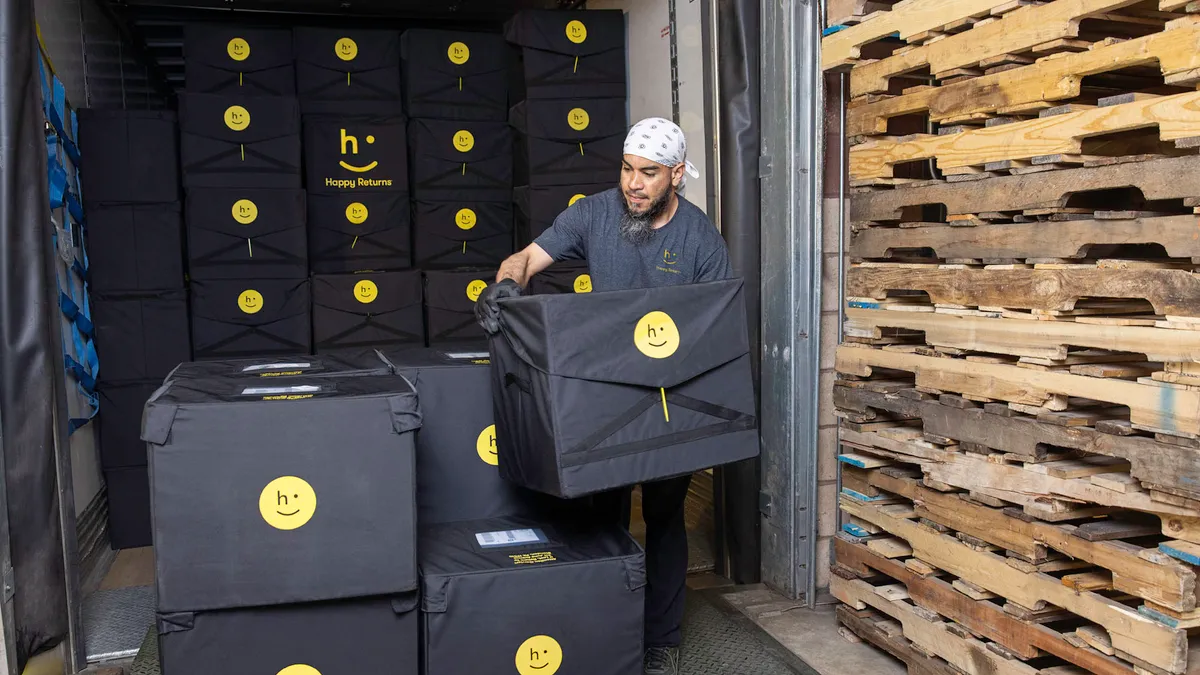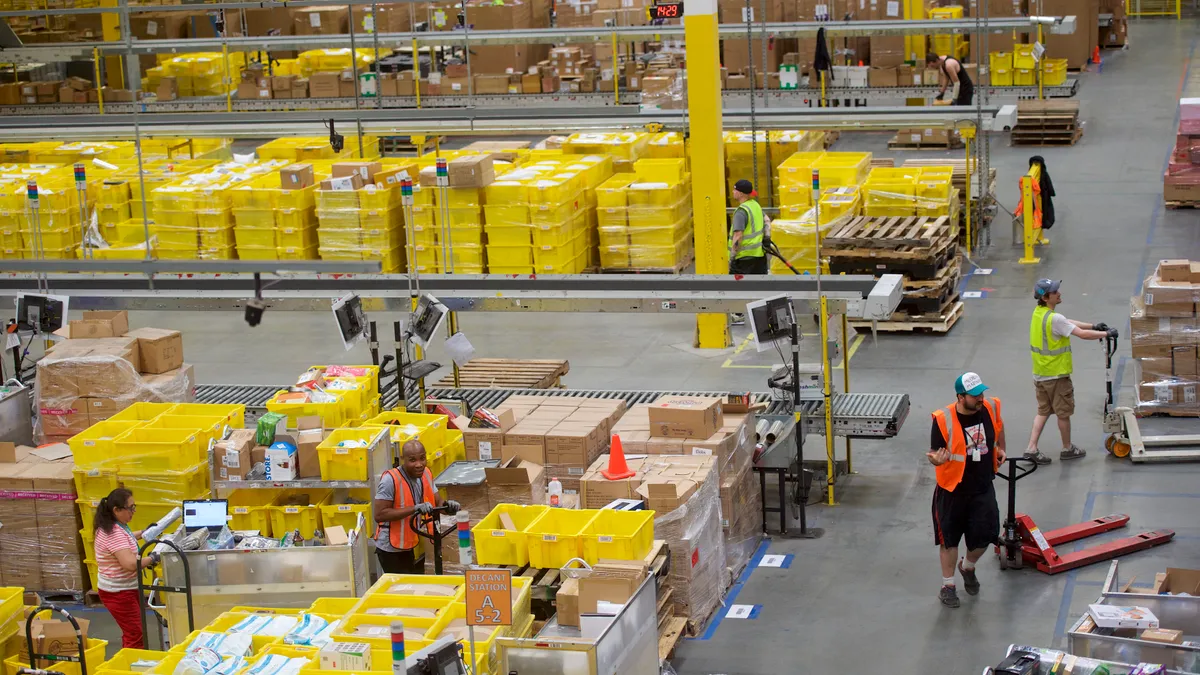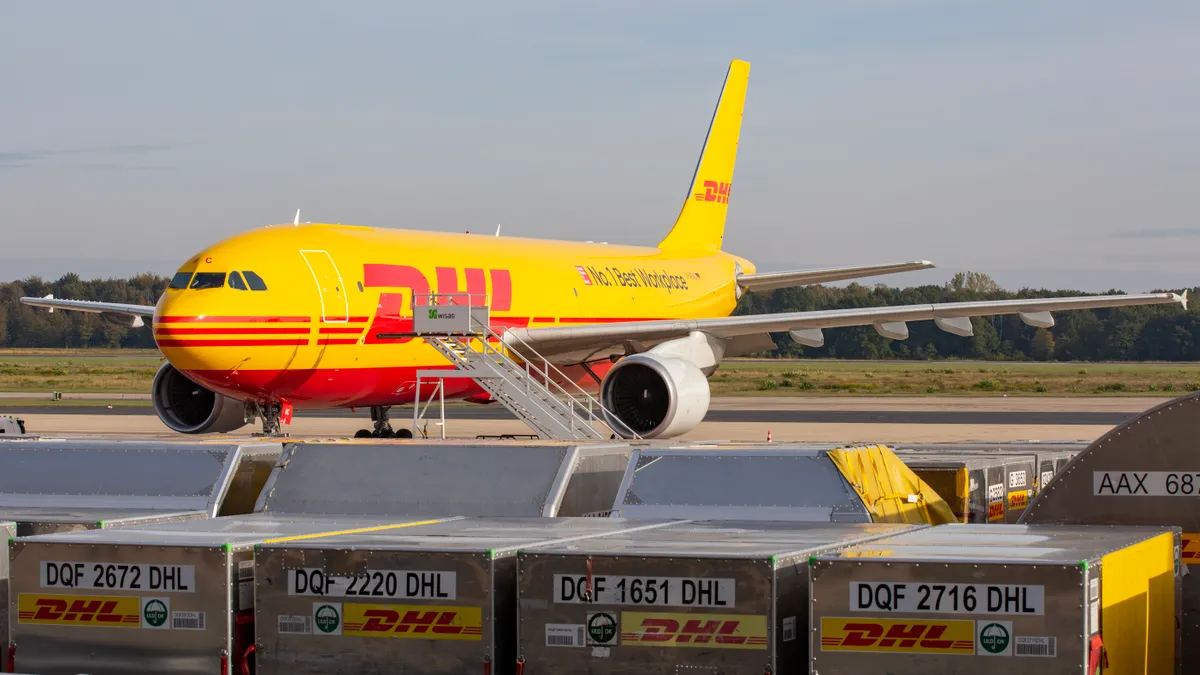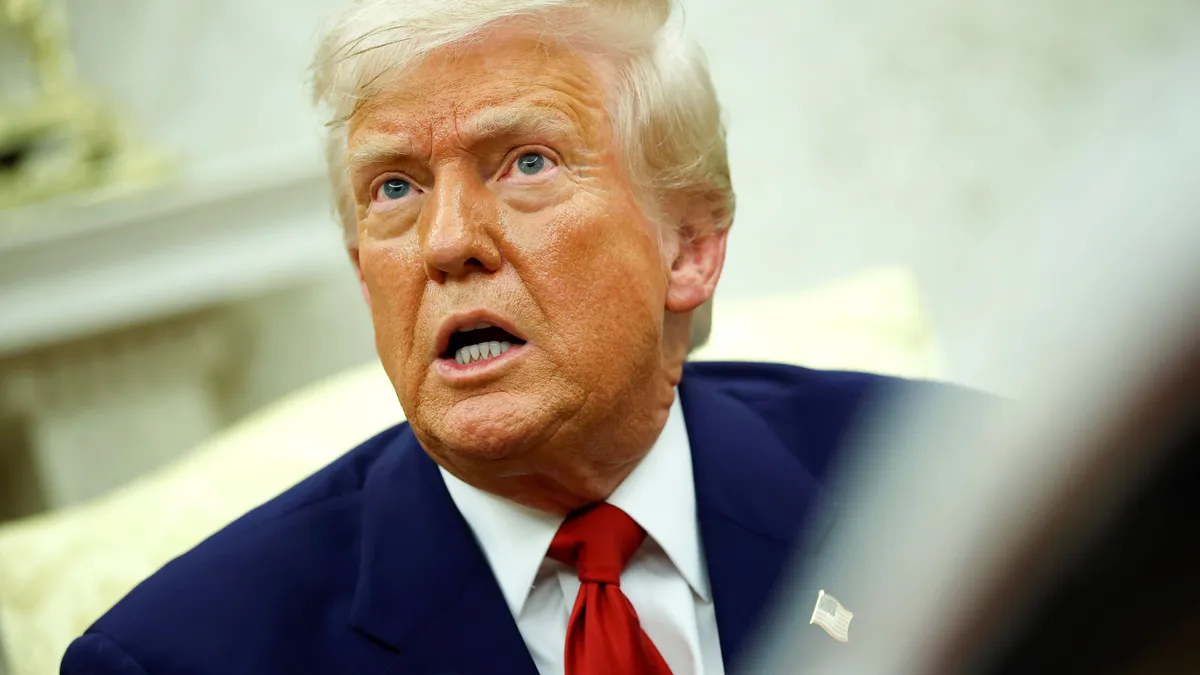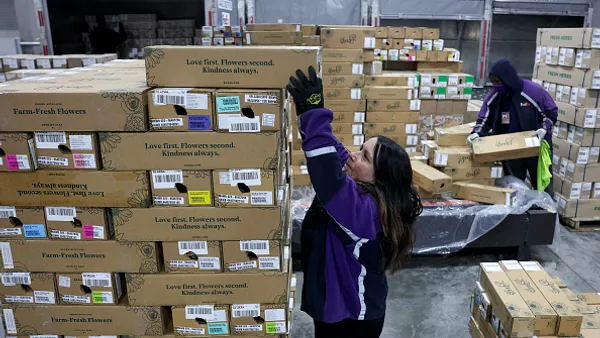The U.S. de minimis exemption will end for products from China and Hong Kong on May 2, with other countries slated to follow, putting many direct-to-consumer supply chains in flux.
The decades-old exemption enables products of less than $800 to enter the U.S. without having to pay duties, helping companies ship parcels cross-border at a low cost. But after mounting scrutiny and subsequent actions from the Trump administration to cut the provision’s scope, experts say importers reliant on de minimis will need to adjust their order fulfillment and shipping processes for a new era.
Here are four key questions for supply chains using the exemption to consider as its future remains in jeopardy.
1. Are de minimis shipments impacted by recent tariff hikes on China?
Imports from China are currently subject to a combined 145% tariff rate after multiple increases, White House Press Secretary Karoline Leavitt said Friday. Without the de minimis exemption, these duties will also apply to sub-$800 products from the country.
However, de minimis-eligible products from China and Hong Kong entering the U.S. via the international postal system will encounter a different approach to duties.
Instead of being charged all applicable fees on May 2, postal imports will face a duty rate of either 120% or $100, with the choice being up to transportation carriers. The $100 fee will increase to $200 on June 1. Both the rate and flat charge were originally lower, but the Trump administration has since raised them amid its tariff escalation with China.
The carve-out for postal shipments comes after the U.S. Postal Service struggled with duty collection for postal volume when the exemption was first nixed for China. Postal systems do not have the same level of shipment information granularity as express air couriers, according to Marianne Rowden, CEO of E-Merchants Trade Council.
"It really was not designed for packages. It was designed for letters,” Rowden said in an interview.
Hong Kong's postal service announced Wednesday it is unwilling to collect the tariffs and has suspended the acceptance of shipments traveling by non-air methods to the U.S. immediately. Air-bound postal items destined for the U.S. will stop being accepted April 27.
2. Will de minimis changes spur price increases?
The looming closure of the exemption could spur short-term price volatility for e-commerce goods from China.
Before the exemption ends, de minimis users may roll out aggressive sales to encourage more customer orders, said Aaron Rubin, CEO of warehouse management system provider ShipHero, in an April 3 webinar. This will allow brands to move as much of their de minimis volume from China into the U.S. as possible before tariffs are imposed on such shipments.
But prices may climb once May 2 arrives as e-commerce giants that use the exemption, like Shein and Temu, work to cover the additional costs, experts told Supply Chain Dive. Brands must therefore begin communicating the rationale for expected price hikes to already beleaguered consumers.
"I think consumers, unfortunately, will have to bite the bullet and pay for some of these costs, and ultimately brands need to do a good job of educating consumers of why these costs are in place," said Juan Pellerano-Rendon, chief marketing officer at e-commerce platform Swap, in an interview.

Brands should carefully consider how they will factor new tariffs into consumer prices, be it by showing them as standalone charges at checkout or lumping them into existing product costs, said Agustin Farias, trade and tariff strategy lead at global shipping and compliance company Passport, in an April 3 webinar.
3. How can importers adapt to de minimis changes?
While price hikes are a short-term play, e-commerce retailers could shift more of their order fulfillment operations into the U.S. to limit their long-term exposure to tariffs, experts said.
Many brands currently use facilities in Canada and Mexico to fulfill and ship orders to the U.S., but ongoing scrutiny over the de minimis exemption is leading them to explore domestic options, Flexport CEO Ryan Petersen said in an interview with CNN.
"All of those companies are scrambling as we speak to bring that fulfillment back to the U.S.," Petersen said.
Beyond seeking more U.S.-based fulfillment partners, de minimis-reliant businesses may also import more inventory in bulk or partner with capable customs brokers and lawyers to help limit tariff costs, experts have suggested previously.
Once China and Hong Kong products lose de minimis eligibility, importers may need to find ways to separate those orders from items made in other countries, Farias said.
A potential strategy could be to group items from China and Hong Kong into a single manifest using traditional entry procedures, he said. While those items will still need to be subject to the tariffs, consolidating them into one entry will allow importers to lower their customs brokerage costs versus filing individual entries.
"All of those companies are scrambling as we speak to bring that fulfillment back to the U.S."

Ryan Petersen
Flexport CEO
Shipping goods from Vietnam could also be a good near-term solution for shippers with existing production operations in the country. Exports of Vietnam-based products currently are able to reap "de minimis benefits for as long as those are in effect," according to e-commerce fulfillment provider Portless.
4. Can the de minimis exemption survive?
The U.S. will eliminate the trade tool for countries beyond China once capable duty collections systems are in place, according to an executive order on reciprocal tariffs, but no firm end date has been provided. Although Trump has instituted pauses on de minimis changes in the past, some experts are doubtful that the exemption will be around for much longer, at least in its current state.
ShipHero’s Rubin said while tariff rates may continue to change, the end of the exemption "is a foregone conclusion." He added that he expects it to be fully eliminated by the end of 2025.
However, the White House has left the door open for further modifications to its de minimis ban on China and Hong Kong. The Commerce Secretary will submit a report within 90 days on the impact of the changes "on American industries, consumers, and supply chains and making recommendations for further action as he deems necessary," per an April 2 executive order.
Alison Layfield, director of product development at ePost Global, said she expects the de minimis exemption will be around for the long term in some form, but perhaps at a lower threshold than $800 to limit the amount of imports that can leverage it.
"There's got to be a threshold that would work and would work across the board for all countries," Layfield said in an interview. "I mean, managing it by country right now, I think, is going to be very challenging.”
Editor's note: This story was first published in our Logistics Weekly newsletter. Sign up here.





